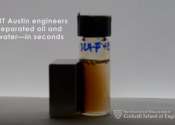Laboratory experiments probe the formation of stars and planets
The cosmos is a void dotted with stars and an ever-increasing number of newly-observed planets beyond our solar system. Yet, how these stars and planets formed out of clouds of interstellar dust and gas remains mysterious.








